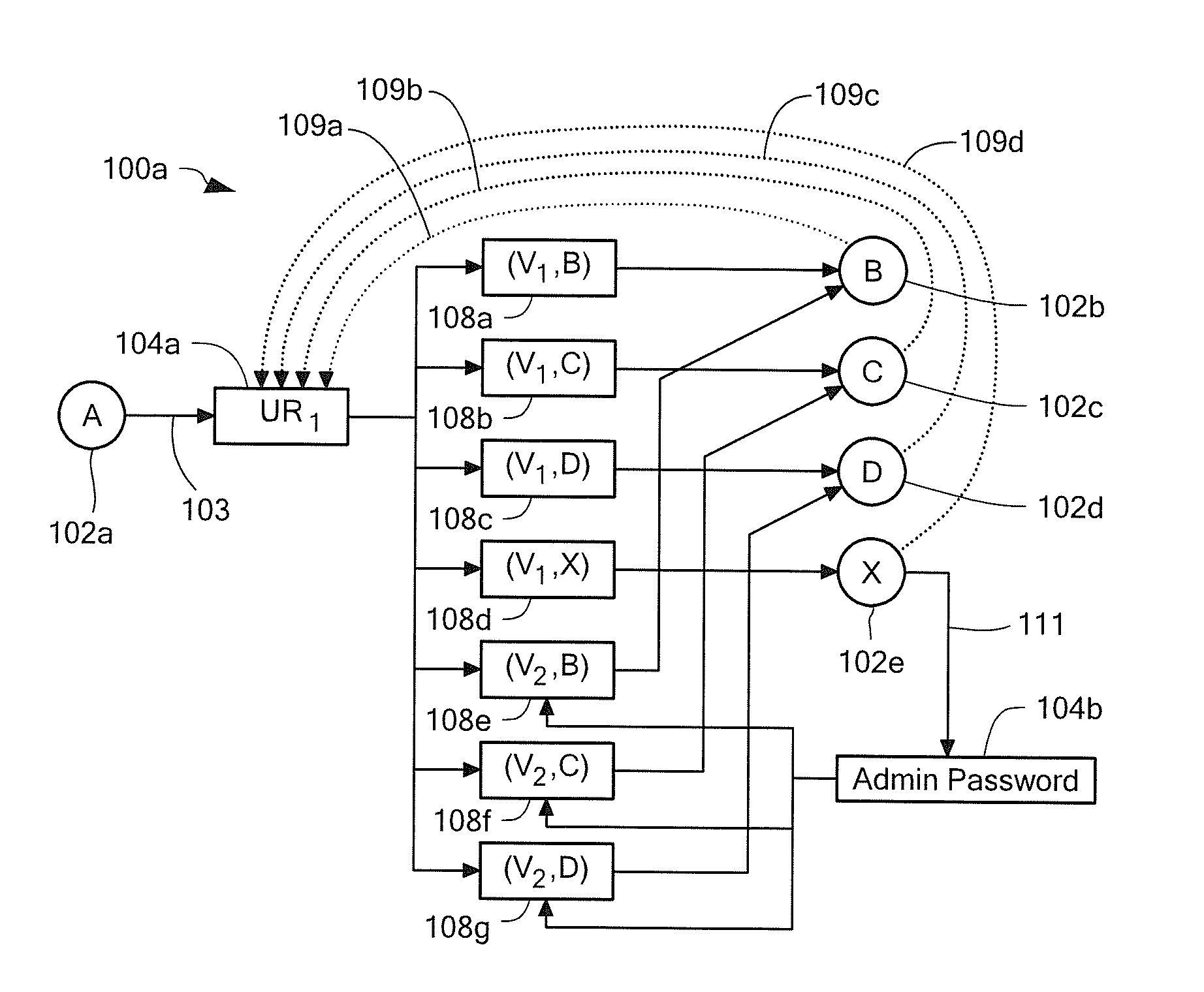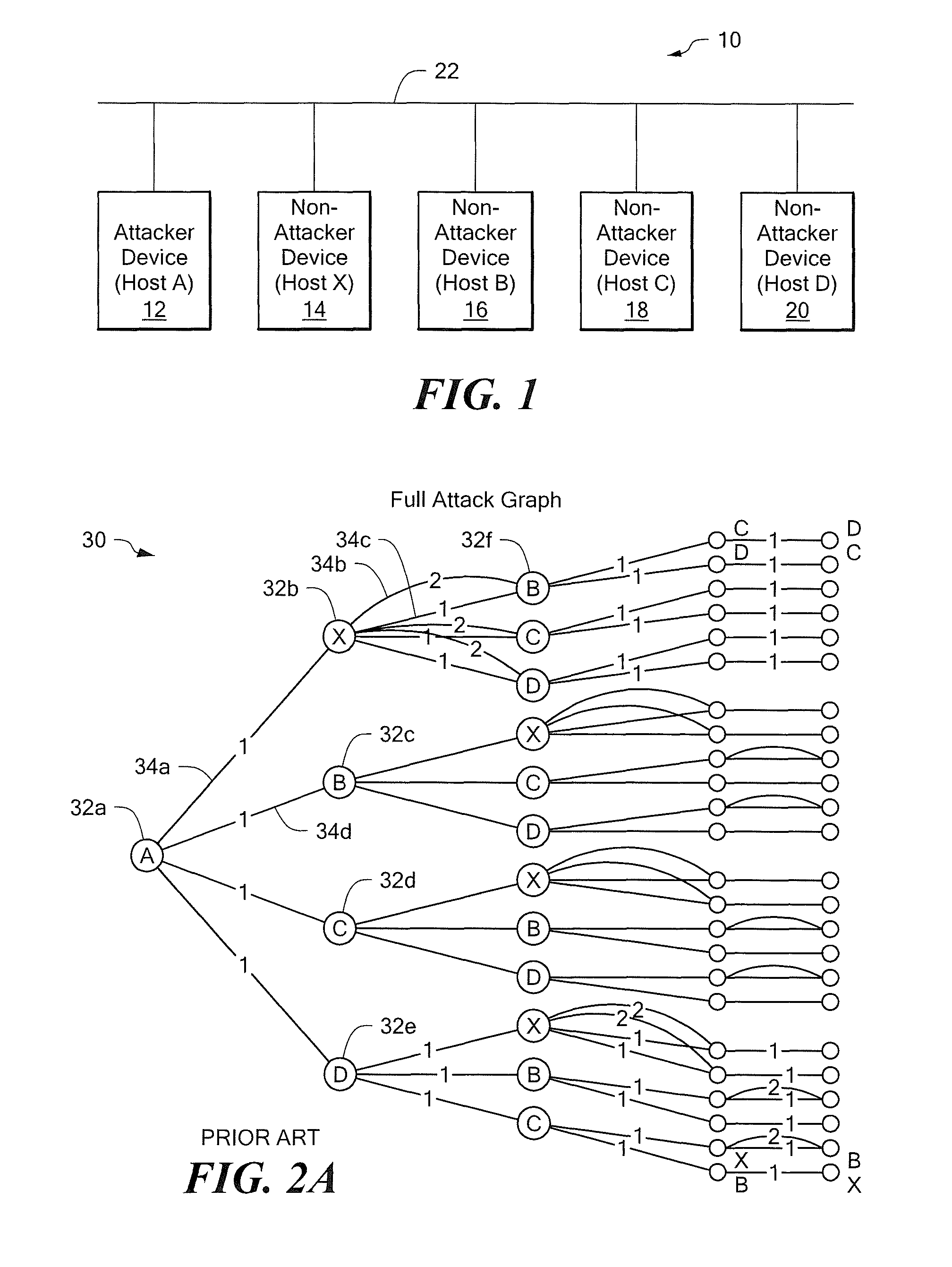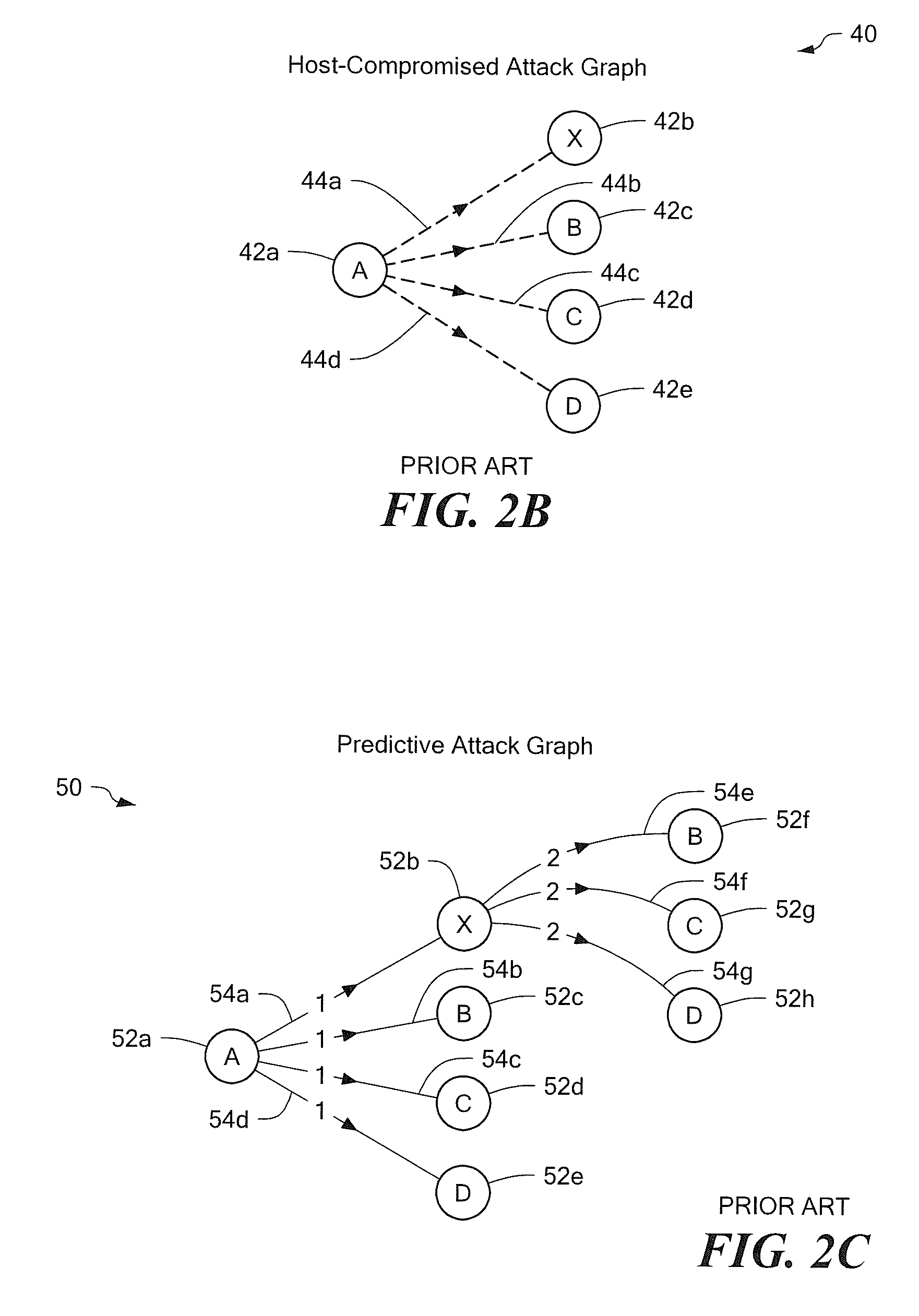Generating a multiple-prerequisite attack graph
a technology of attack graph and precondition, applied in the direction of unauthorized memory use protection, instruments, error detection/correction, etc., can solve the problems of difficult analysis of cyber attacks and difficult security of large private networks
- Summary
- Abstract
- Description
- Claims
- Application Information
AI Technical Summary
Benefits of technology
Problems solved by technology
Method used
Image
Examples
Embodiment Construction
Referring to FIG. 1, an example of a network system 10 includes an attacker device 12 (also referred to as a host A) connected by a network 22 to non-attacker devices, for example, a non-attacker device 14 (also referred to as a host X), a non-attacker device 16 (also referred to as a host B), a non-attacker device 18 (also referred to as a host C) and a non-attacker device 20 (also referred to as a host D). The attacker device 12 corresponds to a starling point of an attack by an attacker. The non-attacker devices 14, 16, 18, 20 correspond to devices not exploited initially by this attacker. As used herein, a host corresponds to any device on the network capable of filtering, modifying, or accepting network traffic. For example, a host may include routers, firewalls, desktop computers, server / rackmount computers, laptop computers and so forth.
As used herein, a vulnerability represents a flaw in a computer program, or a misconfiguration in a computer program, or some other property ...
PUM
 Login to View More
Login to View More Abstract
Description
Claims
Application Information
 Login to View More
Login to View More - R&D
- Intellectual Property
- Life Sciences
- Materials
- Tech Scout
- Unparalleled Data Quality
- Higher Quality Content
- 60% Fewer Hallucinations
Browse by: Latest US Patents, China's latest patents, Technical Efficacy Thesaurus, Application Domain, Technology Topic, Popular Technical Reports.
© 2025 PatSnap. All rights reserved.Legal|Privacy policy|Modern Slavery Act Transparency Statement|Sitemap|About US| Contact US: help@patsnap.com



